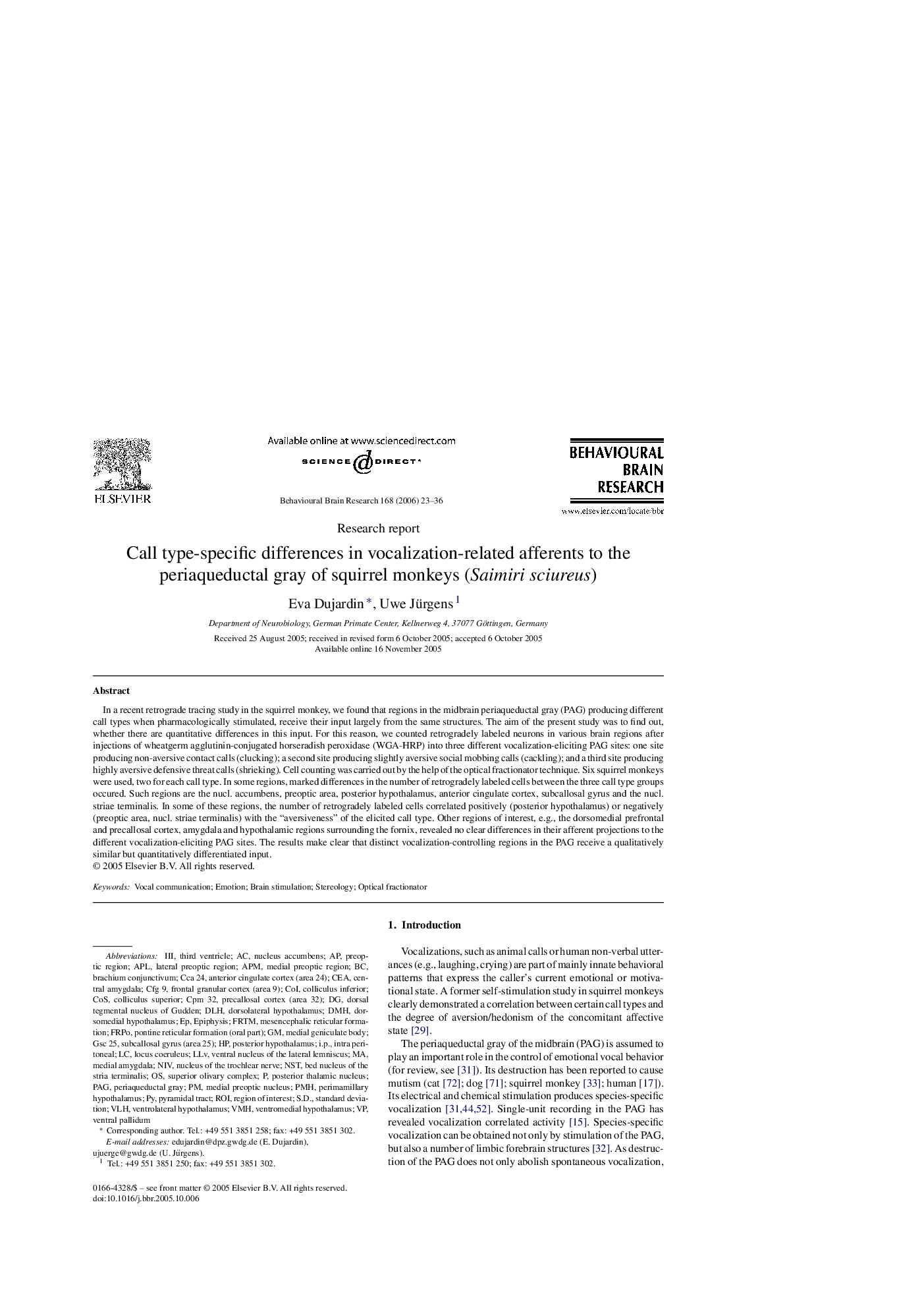| Article ID | Journal | Published Year | Pages | File Type |
|---|---|---|---|---|
| 4316140 | Behavioural Brain Research | 2006 | 14 Pages |
In a recent retrograde tracing study in the squirrel monkey, we found that regions in the midbrain periaqueductal gray (PAG) producing different call types when pharmacologically stimulated, receive their input largely from the same structures. The aim of the present study was to find out, whether there are quantitative differences in this input. For this reason, we counted retrogradely labeled neurons in various brain regions after injections of wheatgerm agglutinin-conjugated horseradish peroxidase (WGA-HRP) into three different vocalization-eliciting PAG sites: one site producing non-aversive contact calls (clucking); a second site producing slightly aversive social mobbing calls (cackling); and a third site producing highly aversive defensive threat calls (shrieking). Cell counting was carried out by the help of the optical fractionator technique. Six squirrel monkeys were used, two for each call type. In some regions, marked differences in the number of retrogradely labeled cells between the three call type groups occured. Such regions are the nucl. accumbens, preoptic area, posterior hypothalamus, anterior cingulate cortex, subcallosal gyrus and the nucl. striae terminalis. In some of these regions, the number of retrogradely labeled cells correlated positively (posterior hypothalamus) or negatively (preoptic area, nucl. striae terminalis) with the “aversiveness” of the elicited call type. Other regions of interest, e.g., the dorsomedial prefrontal and precallosal cortex, amygdala and hypothalamic regions surrounding the fornix, revealed no clear differences in their afferent projections to the different vocalization-eliciting PAG sites. The results make clear that distinct vocalization-controlling regions in the PAG receive a qualitatively similar but quantitatively differentiated input.
